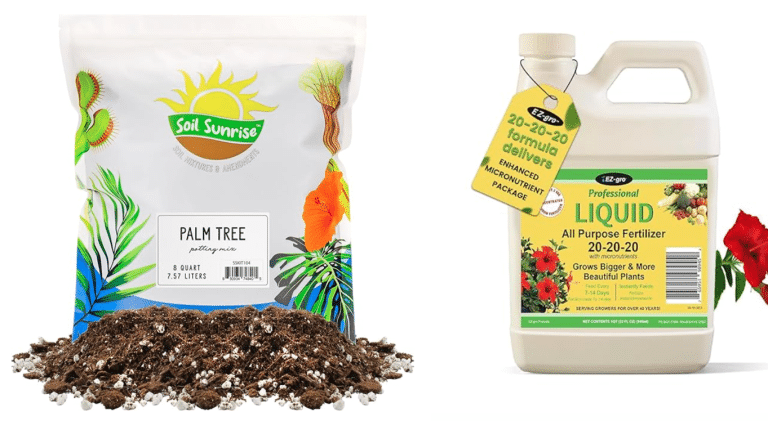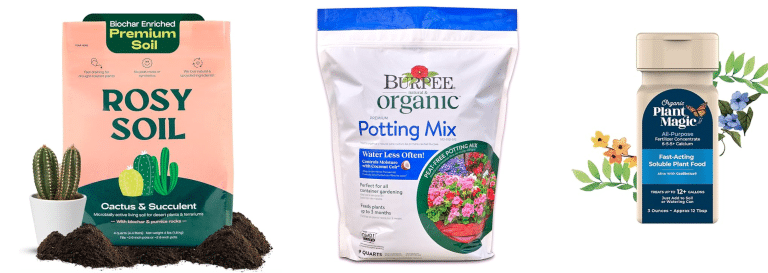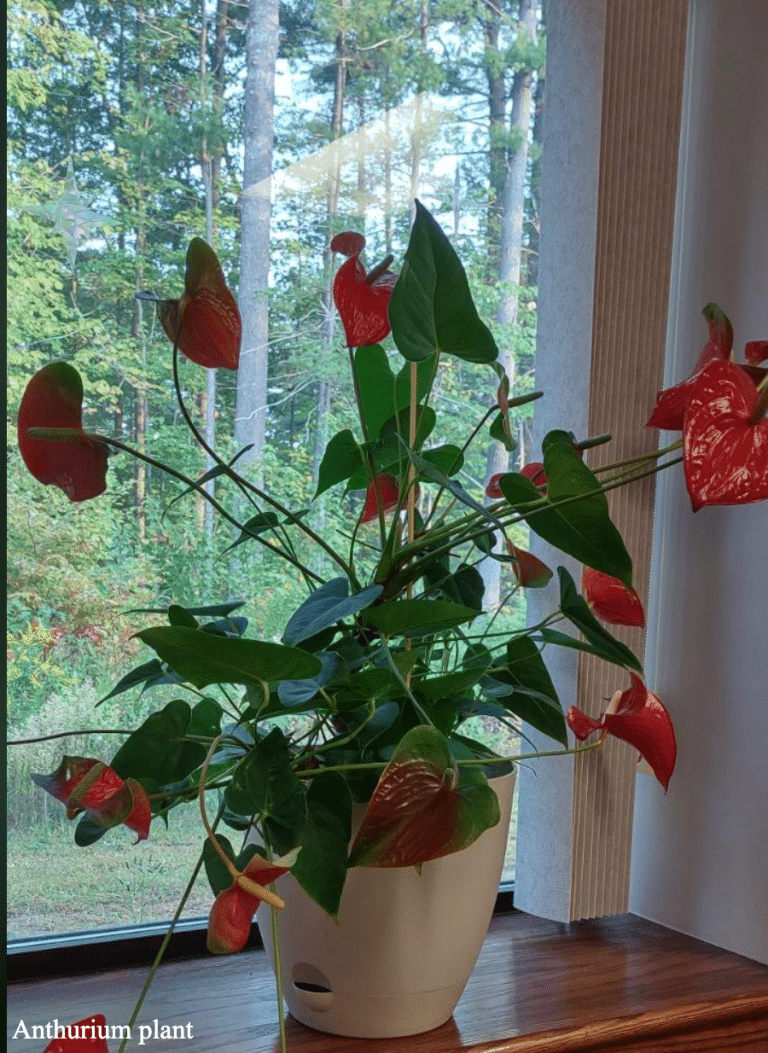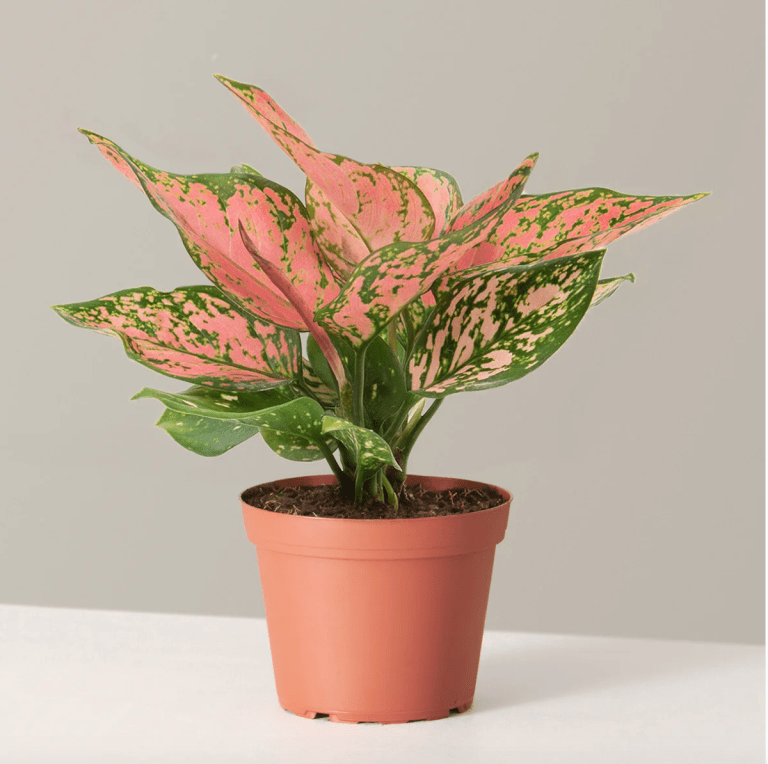Ultimate guide to Common problems When Growing Trees in Low Light & How to Fix Them
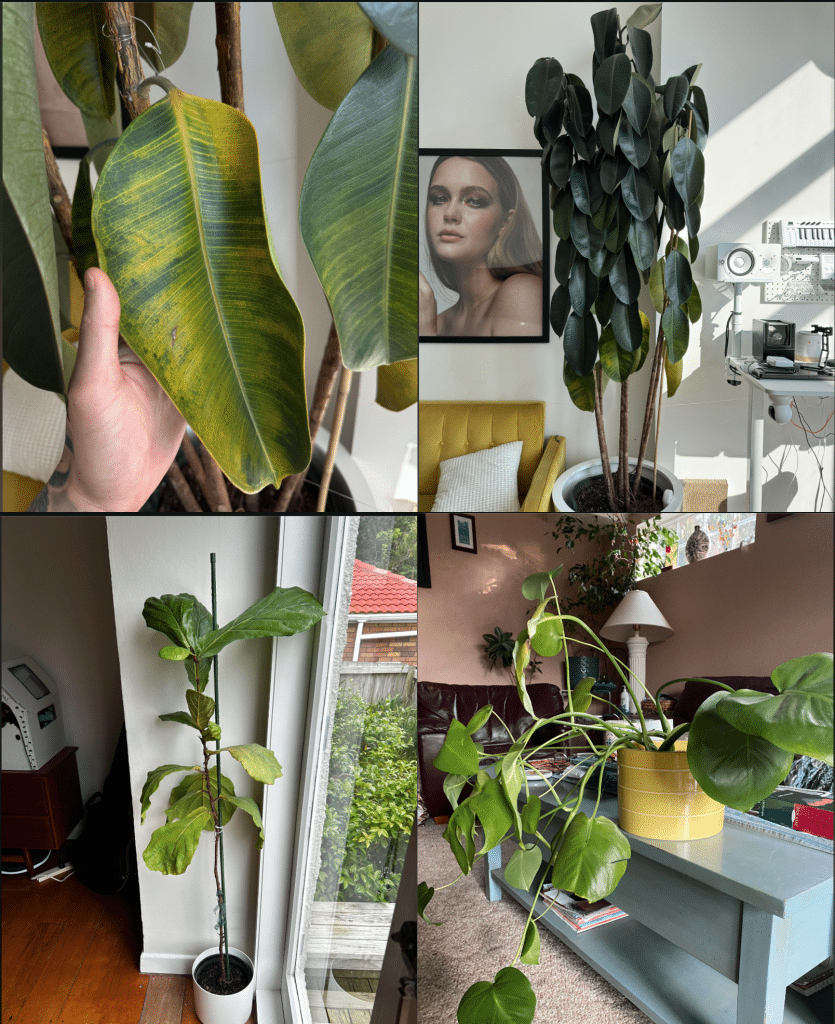
When you purchase through links on our site, we may earn an affiliate commission, which helps sustain our blog!
Growing low light indoor trees adds life and freshness to your dim spaces, but low-light conditions can present serious challenges. Without adequate light, trees may struggle with slow growth, leggy stems, yellowing leaves, or even pest infestations. The good news? With the right care adjustments, even trees in dim environments can flourish!
In this guide, we’ll walk through the most common low-light tree problems and offer practical fixes to keep your indoor trees happy and healthy.
Signs Your Tree Is Struggling in Low Light
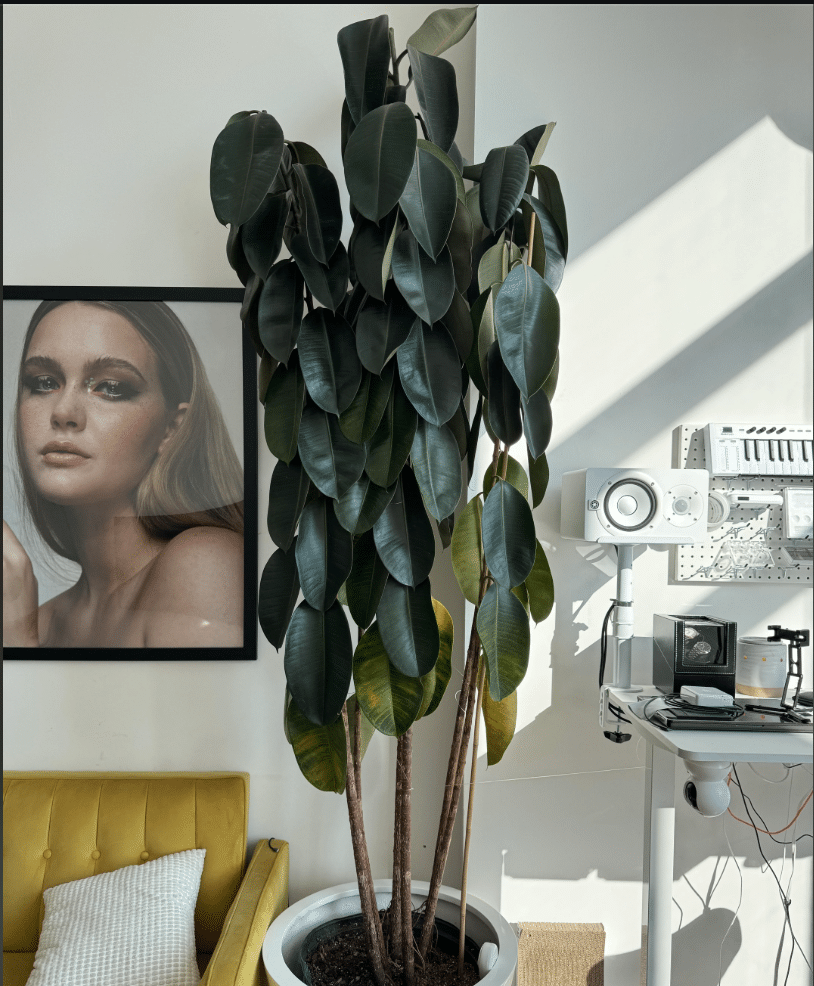
1. Weak, Leggy Growth
When a tree isn’t getting enough light, it starts reaching—literally. Instead of growing full and compact, the branches become long and stretched out, like they’re desperately searching for the nearest window. This happened with one of our Parlor Palms. We thought it was just a slow grower, but when we compared it to one in a brighter spot, the difference was huge. If new growth looks thin, weak, and spaced out, that’s your tree signaling for more light.
2. Yellowing or Dropping Leaves
Not all leaf drop is a crisis—trees naturally shed old leaves to make room for new ones. But when a normally lush tree starts dropping leaves excessively, or they turn pale yellow first, low light is often the culprit. Leaves need light to produce chlorophyll, which keeps them green. If older leaves (especially the lower ones) are turning yellow and falling off faster than usual, the tree may not be getting enough light to sustain them.
Read also: Why do leaves on low light indoor trees turn yellow
3. Stunted Growth or No New Leaves
Sometimes trees don’t die outright from low light; they just… stop growing. If a tree hasn’t put out new leaves in months, even during growing season, it might be struggling to produce enough energy. One of our Dracaenas sat in a dim hallway for nearly a year without a single new leaf before we moved it. A few weeks in a brighter spot, and suddenly—new growth. If your tree looks exactly the same month after month, it’s time to reassess its lighting situation.
4. Sparse or Drooping Foliage
Healthy trees have dense foliage, but low light can cause them to thin out over time. We’ve seen this happen with our Rubber Plants and Weeping Figs, which rely on steady light to keep their full shape. When they don’t get enough, leaves drop, branches look sparse, and the plant starts to lose that lush, vibrant appearance. If a tree looks more “skeletal” than usual, it may be conserving energy by shedding leaves.
5. Branch Dieback
This is when whole sections of a tree start drying up, even if the rest of it looks fine. We’ve noticed it happens when a tree has been in low light for too long and can’t support all its branches anymore. You might see twigs becoming brittle, turning brown, or completely drying out. If this happens, prune back the dead sections and move the tree somewhere brighter before more damage occurs.
What We Do When Our Trees Show These Signs
If any of these symptoms sound familiar, don’t panic! The first thing we do is move the tree to a brighter location—ideally near a window with indirect light. If that’s not possible, we use grow lights to supplement. And we always adjust watering—trees in low light use less water, so overwatering can make things worse. Most importantly, we stay patient. Trees take time to recover, but with the right care, they bounce back.
Common Problems When Growing Trees in Low Light & How to Fix Them

Why does my low light indoor tree have Slow or Stunted Growth?
One of the first things we notice when a tree isn’t happy in low light? It just stops growing. Without enough light, photosynthesis slows down, meaning the tree has less energy to produce new leaves and branches. We’ve had trees sit in the same spot for months without a single new leaf, only to spring back to life after moving them closer to a window.
Here’s what helps:
- Supplement with grow lights. We use LED grow lights on timers, mimicking natural daylight cycles. A full-spectrum light placed about a foot away from the tree works best.
- Use mirrors to reflect light. In darker corners, we position mirrors behind plants to bounce whatever natural light we have onto their leaves. These are also some great ways to style your low light tree.
- Be mindful of fertilizer. Too much fertilizer won’t fix slow growth—it can actually stress the plant more. We use a gentle, balanced liquid fertilizer (diluted to half strength) once a month during active growth seasons, so our tree reaches the optimal height.
Read also: How tall do some common low light indoor trees get
Why does my low light indoor tree have Leggy, Weak, or Sparse Growth?
Legginess is a dead giveaway that a tree is straining for more light. We once had a Dragon Tree that looked more like a pile of sticks than an actual tree because the stems stretched so much. The branches get weak, the spacing between leaves becomes awkwardly long, and the whole tree starts looking sad.
Here’s what helps:
- Rotate the tree regularly. If one side is growing longer than the other, turning it a quarter every few weeks helps even things out.
- Move it closer to a window or under a grow light. More light will encourage compact growth and stronger branches.
- Prune back weak, stretched growth. This redirects the plant’s energy into new, healthier growth.
Why does my low light indoor tree have Yellowing or Dropping Leaves?
It’s normal for trees to drop a few old leaves, but when it happens all at once, we know something’s off. Low light slows down chlorophyll production, which is what keeps leaves green. We had a Weeping Fig that turned almost entirely yellow within a month because it was too far from a light source.
Here’s what helps:
- Increase light exposure gradually. Moving the tree suddenly to bright light can shock it. We transition slowly by placing it in a brighter spot for a few hours a day at first.
- Adjust watering. Less light means slower water absorption. We always check that the top two inches of soil are dry before watering.
- Identify if it’s natural shedding or stress. If only the oldest leaves are dropping, it might just be seasonal. But if younger leaves are falling, the tree needs more light ASAP.
Why is there Root Rot in my low light indoor tree?
Low light means trees use less water, which makes overwatering a huge risk. We once lost a beautiful Rubber Plant to root rot because we didn’t realize how long the soil was staying damp.
Here’s what helps:
- Switch to a well-draining soil mix. We use a blend of potting soil, perlite, and orchid bark to keep moisture balanced.
- Make sure the pot has drainage holes. No matter how careful we are, standing water will always lead to problems.
- Watch for early signs of rot. If the leaves get soft and mushy or the base of the tree starts smelling funky, we check the roots immediately. Any black or slimy roots get trimmed, and the plant gets repotted in fresh soil.
Read also: How to water low light indoor trees
Pest Problems in Low-Light Conditions
We’ve noticed that trees in low light tend to attract more pests. Probably because they’re weaker and more vulnerable. Spider mites, fungus gnats, and scale love hiding in low-light, humid areas.
Here’s what helps:
- Wipe down leaves regularly. A damp cloth with a little neem oil keeps pests from settling in.
- Increase airflow. We run a small fan near our trees to keep stagnant air from becoming a breeding ground for bugs.
- Use natural pest control. If we spot an infestation, we spray insecticidal soap or neem oil on the leaves every few days until the pests are gone.
Fungal Growth & Mold Issues
If there’s one thing we don’t want to see, it’s mold creeping up the soil. Trees in low-light areas are more prone to fungal problems, especially if there’s poor air circulation. We had this issue with a Money Tree that sat in a corner near a drafty window—within a few weeks, we noticed white fuzz on the topsoil.
Here’s what helps:
- Improve airflow. Just like with pests, a small fan can prevent excess moisture buildup.
- Top-dress the soil with cinnamon. It sounds weird, but cinnamon is a natural antifungal! We sprinkle a bit on the soil if we see mold forming.
- Let the soil dry out before watering. Keeping the top inch dry helps prevent fungal spores from growing.
The Role of Pruning in Keeping Low-Light Trees Healthy

How Pruning Encourages Stronger, Fuller Growth in low light indoor trees?
One of the biggest problems we see in low-light trees is spindly, stretched-out growth. It happens when a tree doesn’t get enough light and starts growing long, weak branches in search of it. Instead of letting those stems waste energy, pruning cuts them back and encourages the tree to send out new, compact growth.
We had a leggy Fiddle Leaf Fig that looked more like a stick than a tree, with leaves bunched up only at the top. After pruning back the top growth, new leaves started appearing lower on the stem, making the tree look fuller. It was a game-changer.
Pruning also helps by:
- Improving airflow, which reduces the risk of fungal growth in low-light areas.
- Preventing energy waste, so the tree focuses on strong, healthy branches instead of weak ones.
- Encouraging bushier growth, especially in trees like Rubber Plants and Weeping Figs that can get bare if left unpruned.
Best Pruning Techniques to Manage Leggy Trees even in low light conditions
Pruning isn’t about hacking off branches randomly—timing and technique matter. Here’s what we do when our low-light trees need a trim:
- Use sharp, clean pruning shears. Dull blades can crush stems instead of making clean cuts, which slows healing.
- Cut just above a leaf node. That’s the small bump on the stem where a new leaf will emerge. This encourages growth in the right places.
- Remove only a third of the plant at a time. Cutting too much at once can shock the tree.
- Trim weak, stretched-out stems first. These take up energy without contributing to a strong structure.
- Encourage branching by making strategic cuts. When we want a tree to grow fuller, we cut just above a node where we want new growth to sprout.
For trees like Dracaenas, we’ve also found that notching—making a small cut halfway through the stem without removing it—can encourage new branches to form. It works wonders on leggy trunks.
When and How Often to Prune Trees in dim Light
Timing is everything when it comes to pruning. In low light, trees already grow more slowly, so pruning too frequently can leave them with little energy to recover. We’ve found that:
- Spring and early summer are the best times to prune since trees are actively growing.
- Light pruning (removing dead or weak growth) can be done anytime. If a stem looks unhealthy, we cut it off before it drains more energy.
- Major pruning should only be done once or twice a year. We try to avoid aggressive pruning in fall or winter when trees naturally slow down.
Conclusion
Keeping trees healthy in low light takes some adjustments, but with the right care, they can still flourish! By identifying problems early and applying the right fixes—like better positioning, pruning, proper watering, and artificial lighting—you can create a thriving indoor tree environment. Have you struggled with growing trees in low light? Let us know your biggest challenges in the comments!


